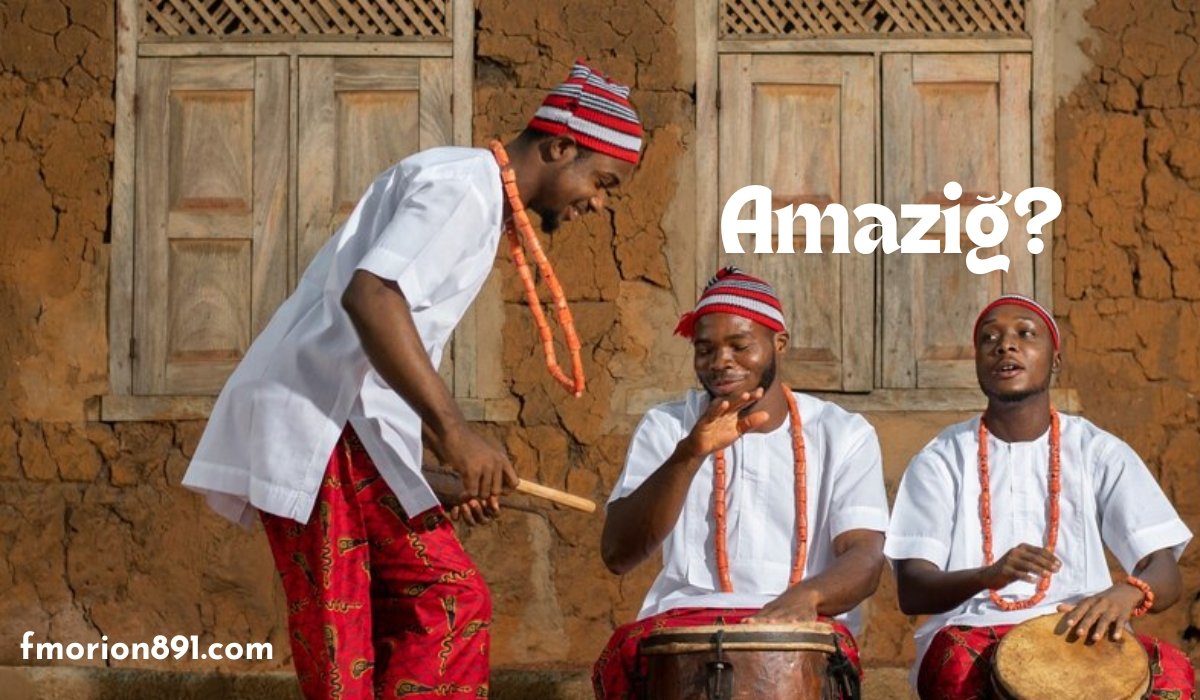Introduction
The Amaziğ people are often referred to as the indigenous inhabitants of North Africa, with a history that spans thousands of years. Despite facing numerous challenges, from colonialism to cultural marginalization, the Amaziğ have managed to retain their unique identity. Their story is one of resilience and cultural richness, rooted in a deep connection to their land, language, and traditions.
In the face of foreign rule and modern-day assimilation, the Amaziğ have not only survived but thrived, their languages and customs continuing to flourish across North Africa and beyond. Understanding the Amaziğ culture, especially its language and history, offers a window into one of the most enduring legacies of the ancient world.
The Amaziğ Languages
Diversity and Classification
The Amaziğ languages, collectively known as Tamazight, represent a diverse linguistic family. These languages are primarily spoken across Morocco, Algeria, Libya, Tunisia, and parts of the Sahara Desert. Linguists classify the Amaziğ languages into three main branches:
- Northern Amaziğ, spoken in the Rif and Atlas Mountains of Morocco and northern Algeria.
- Zenati Amaziğ, prevalent in regions like Tunisia and eastern Algeria.
- Tuareg, a Southern variant, spoken by the nomadic Tuareg people in the Sahara.
While these languages differ across regions, they share common grammatical structures and vocabulary that link them together.
Historical Evolution
The roots of Amaziğ languages go back thousands of years. The script used to write these languages, known as Tifinagh, can be traced back to ancient Phoenician and Carthaginian influences. Throughout history, the Amaziğ languages have been shaped by their interactions with external cultures, including Arabic, during the Arab conquests of the 7th century. Despite these influences, the core of Amaziğ identity has remained intact.
Language Revival Efforts
Today, many Amaziğ languages face challenges due to cultural assimilation and linguistic erosion. However, various initiatives have emerged to revitalize and preserve these ancient tongues. In Morocco, for instance, Tamazight was officially recognized as an official language in 2011, and efforts are being made to teach it in schools. Additionally, digital media and online platforms are being used to promote Amaziğ culture and language, making it accessible to younger generations.
Amaziğ Culture and Traditions
Social Structure and Customs
The Amaziğ people have traditionally lived in tightly-knit tribal communities, with a social structure based on family and clan ties. Elders play a significant role in decision-making, and the collective well-being of the community is prioritized over individualism. Hospitality is a cornerstone of Amaziğ culture, and visitors are often treated with warmth and respect, regardless of their background.
Arts and Crafts
Amaziğ arts and crafts are an expression of their rich cultural heritage. Weaving, pottery, and metalwork are prominent in many Amaziğ communities, with each tribe showcasing distinct patterns and techniques. One of the most famous crafts is Amaziğ jewelry, known for its intricate designs and use of silver. These pieces often carry symbolic meanings, representing protection, fertility, or status.
Music and Dance
Music and dance are integral to Amaziğ culture, serving as a means of storytelling and celebration. The traditional “ahwach” dance, performed during festivals and ceremonies, involves rhythmic movements and is accompanied by drums and flutes. Izlan, a type of Amaziğ poetry, is often recited alongside musical performances, preserving oral histories and cultural values.
Religion and Spirituality
Historically, the Amaziğ people practiced a blend of animism and ancestor worship, with strong ties to nature and the elements. With the spread of Islam in North Africa, most Amaziğ people embraced Sunni Islam, but they retained many of their pre-Islamic customs and rituals. Today, Amaziğ spirituality is a blend of Islamic practices and traditional beliefs, with a deep reverence for saints and local religious figures.
Amaziğ History and Heritage
Ancient Civilizations
The Amaziğ people played a pivotal role in the development of ancient North African civilizations. They were integral to the rise of powerful kingdoms, such as the Kingdom of Numidia and the Berber dynasties that ruled large swaths of the Maghreb. These civilizations had significant interactions with Rome, Carthage, and later, the Arab Empire, all of which left their mark on Amaziğ culture.
Colonial Influence
The arrival of European colonizers in the 19th and 20th centuries brought profound changes to Amaziğ society. Under French and Spanish rule, many Amaziğ communities faced land displacement, cultural suppression, and economic marginalization. The colonizers sought to impose their languages and customs on the region, further eroding Amaziğ identity. Despite these challenges, the Amaziğ people managed to maintain their distinct culture, often using it as a form of resistance.
Resistance and Survival
The Amaziğ people have a long history of resistance against foreign domination. From the Roman Empire to modern colonial powers, they have consistently fought to preserve their independence and culture. Notable leaders, such as Queen Dihya and Abdelkrim al-Khattabi, emerged as symbols of Amaziğ resistance. Today, this spirit of resistance is reflected in the Amaziğ movement, which advocates for cultural rights and self-determination.
Amaziğ Identity and Activism
Cultural Identity
The concept of Amaziğ identity is deeply intertwined with language, land, and history. For many, being Amaziğ means preserving a connection to their ancestors and maintaining their distinct cultural practices. This identity has become a unifying force for Amaziğ people across North Africa, helping them assert their place in a rapidly changing world.
Amaziğ Activism
In recent decades, there has been a growing movement to promote Amaziğ language and culture. Activists across North Africa have pushed for greater recognition of Amaziğ languages in education, media, and public life. This activism has led to significant victories, such as the official recognition of Tamazight in Morocco and Algeria. However, challenges remain, particularly in regions where Amaziğ communities continue to face political and cultural marginalization.
Challenges and Opportunities
Despite the progress made in promoting Amaziğ culture, there are still significant challenges ahead. The rise of globalization and urbanization has led to the erosion of traditional practices, and many younger Amaziğ people are moving away from their cultural roots. However, there are also opportunities for revitalization, particularly through digital platforms and global cultural exchange.
Amaziğ Culture in the Global Context
Amaziğ Diaspora
The Amaziğ diaspora is spread across Europe, North America, and other parts of the world. Many Amaziğ people emigrated in search of better economic opportunities or to escape political instability in North Africa. Despite living abroad, many members of the Amaziğ diaspora remain deeply connected to their cultural roots, celebrating their heritage through festivals, language preservation, and community organizations.
Global Recognition
In recent years, there has been growing international recognition of Amaziğ culture. This is reflected in the inclusion of Amaziğ languages in UNESCO’s list of endangered languages and the increasing interest in Amaziğ history by scholars and cultural institutions. The global rise of indigenous movements has also brought attention to the rights of the Amaziğ people, positioning them as key players in the global conversation on cultural diversity.
Cultural Exchange
Amaziğ culture has made significant contributions to global diversity through its arts, music, and storytelling traditions. In addition, Amaziğ festivals and cultural events have become platforms for cultural exchange, allowing people from different backgrounds to learn about and appreciate this rich heritage. As the world becomes more interconnected, the Amaziğ people have an opportunity to share their culture on a global stage, contributing to a deeper understanding of North African history and identity.
YOU MAY ALSO: Why Professional Retail Stores Need Tailored Security Services
Conclusion
The story of the Amaziğ people is one of endurance, creativity, and pride. From their ancient origins to their ongoing struggles for recognition, the Amaziğ have continually shaped the cultural landscape of North Africa and the world. As their languages and traditions undergo revival, and their voices grow louder on the global stage, the Amaziğ remind us of the importance of preserving indigenous cultures in a rapidly changing world.
FAQs
1. Who are the Amaziğ people?
The Amaziğ, also known as Berbers, are the indigenous people of North Africa, with a rich culture and history dating back thousands of years.
2. Where are Amaziğ languages spoken?
Amaziğ languages are spoken in countries like Morocco, Algeria, Libya, Tunisia, and parts of the Sahara Desert.
3. What is the significance of Amaziğ culture?
Amaziğ culture is significant for its preservation of ancient traditions, language, arts, and its role in shaping North African history.
4. What is the Tifinagh script used by the Amaziğ?
Tifinagh is the ancient script used to write the Amaziğ languages, and it has its origins in Phoenician and Carthaginian influences.
5. What efforts are being made to revive Amaziğ languages?
There are ongoing efforts to teach Amaziğ languages in schools, promote them through digital media, and preserve them through cultural activism.










